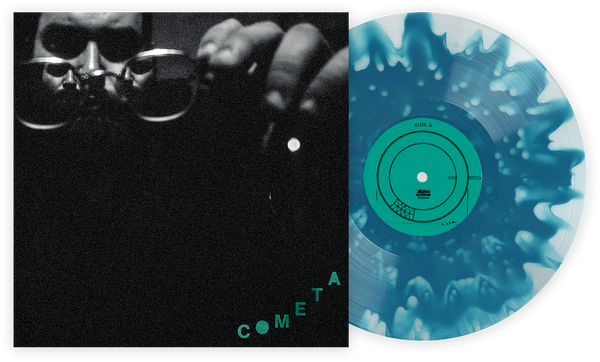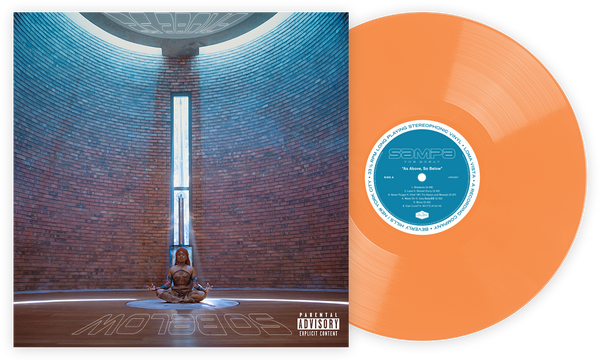During times of high stress in the original Star Trek, Montgomery Scott would often remark that he couldn’t change the laws of physics (a slightly pessimistic tone to take from a man who routinely stuck two fingers up at the theory of special relativity it has to be said). In truth, Scotty missed his calling as an acoustics engineer because here his protestations might have been received with more sympathy. A speaker is something that must follow the basic laws of physics pretty closely. The most keenly felt of all of these laws is that a small speaker will be limited in the depth and level of low frequency energy it can produce.
What this boils down to is that a small speaker will be limited in the absolute bass extension that it can offer. Work with porting, transmission lines and other trickery can squeeze a little more bass out of a speaker of a given size but as a general rule of thumb, the larger the driver and cabinet, the lower a speaker can go. For many of us, though, it simply isn’t practical to have a pair of large, full-range speakers in our listening rooms. This being the case, what are the options for people looking for a bit more low end shove?
One of the most long-standing options for people in this situation is to add a subwoofer. What is a subwoofer? Simply put, it is a speaker designed solely for the purpose of generating low frequency bass signals. Where a conventional speaker will have a frequency response of at least 100 hertz to over 15 kilohertz (15,000Hz), most subs are designed to work solely in the 100 hertz and below range. To do this, they generally use a single large driver or pair of slightly smaller drivers powered by an amplifier built into the same chassis to produce this bass output.
At this point, a few people reading this will consider making their way at speed to the comments section and angrily pointing out that subwoofers have no place in music systems. Their use—if indeed they are to be used at all—is strictly limited to giving explosions a bit of welly in home theater systems. This is an absolutist view. While there is no substitute for using a pair of speakers that can reproduce a full range signal, this is expensive and space consuming. Chosen and installed correctly, a subwoofer can add a valuable sense of power and scale to your music.
So what do you need? Before you go and look at any subwoofers, you need to check what connections are available to you on your equipment. First up, check the back of your amplifier. The connection that is going to make for the simplest job of working with a sub is a preamplifier output- often shortened to pre-out. This is an output that is linked to your volume control but that leaves the amplifier before the actual amplification stage has any effect on it. Connect a subwoofer to this and it will be partnered to your amplifier’s overall volume and adjust in sync.
Don’t have a pre-out? Well, all is not lost but you are going to have to choose your subwoofer more carefully. Many subwoofers will accept a speaker cable connection on what is termed a high-level input. The amplifier of the subwoofer is still doing the legwork so you don’t have to worry about the strain on your amp and the volume will still adjust correctly in line with the level selected on your amplifier. If you don’t have either of these connections, I’m afraid that a subwoofer isn’t going to work for you.
Once you know you’ve got the connections you need, you can start to have a look at the subwoofer that might suit. Like everything in the audio industry, the price spread that subs are available for is enormous and they range in size from the decidedly compact, all the way up to leviathans that would qualify as a studio flat in some cities. As a rule of thumb, you should consider that to generate a meaningful bass response, you need to be looking at something with a reasonably large driver. Eight inches is about as small as is worthwhile and 10 and above will work better—a statement that lives or dies on context. Some designs use a larger number of smaller drivers to create the same radiating area which can work quite well too but these can be more expensive and harder to place.
This last section is important because placement matters a great deal to getting the best results out of a subwoofer. There is an often repeated trope that bass is omnidirectional—your hearing cannot triangulate the source of a low frequency sound. This is true… up to a point. Truly low frequencies are hard to pinpoint but sounds as low as 60 hertz can be directional to a listener in-room. In order for your sub to perform as seamlessly as possible, you will want to try and have it on the same axis as your speakers—and ideally between them. The position doesn’t have to be exactly equidistant between the two but getting it on the same basic axis as the other speakers will make a big difference. Where there is an argument for subs being less directional is that you can usually get away with one sub rather than two. If your budget can buy one good quality subwoofer or two poorer quality ones, I would always recommend one.
The catch for turntable users is you don’t really want a big source of vibration too close to your turntable as some of that vibration can become audible interference, so you will need to work with this too. In a perfect world, you’d have already looked at some of the things we’ve had to say in the past about isolating your record player but if you haven’t already, now might be the time to do so. Other electronics are unlikely to be as seriously affected, so the placement of the sub relative to them is less important.
You should also take into account your available space. Even if your budget allows you to buy a monster with a four-figure power output, you probably won’t see the benefit if it is going to be working at tickover. If space is very tight, it might also be best to look at designs that use a sealed cabinet with no bass port to reduce the amount of room interaction that can occur when something is placed close to a wall. If you are in possession of a solid floor, you might also want to consider a downward-firing design to further reduce room interaction.
So, your subwoofer is chosen and in place, what next? Key to getting the sub playing as well as part of your system is the setup. Most of the criticisms of 2.1 systems will come from people who have heard badly set-up ones. To get the best results, you will need to set your crossover and your level on the subwoofer in such a way as to ensure that it takes over at the point where your speakers bottom out and proceeds to generate a signal that seamlessly continues from there.
To set your crossover, you need to work out at what point your speakers are running out of low end extension. Most speakers will list their frequency response in the manual and this will give you a ballpark figure—most speakers will generate a slightly different result in a normal room. Use this quoted figure and run some low frequency test signals—this can be done for free from here, and will allow you to set your crossover on the sub. You don’t need to be exact to the hertz but getting it in the right area will hugely help the performance.
Having done this, you can then check your levels. There are free sound meters for most types of smartphones that will be good enough for this and you can then use the same level generator to check the output of your speakers just below their cutoff and the subwoofer as it starts to fill in. Subjectivity is everything here. The instructions as presented here are working on the principle you simply want more low extension than your speakers are capable of on their own. If you want huge extra bass, you can of course ramp the levels up… but I think you might get tired of that pretty quickly. If your sub has a phase control and you have placed your sub on the same axis as your speakers, this can be left in the 0 degrees position and ignored.
With a little bit of experimentation and legwork, you can wind up with a system that has bass response that extends far beyond what would be the case if you were simply relying on two small speakers. Having the ability to hear what is on a record down to the bottom end of its frequency response can make for a much more dynamic and exciting experience and subs can help you do it without giving over your whole room to loudspeakers. Convenience doesn’t always have to mean compromised.
Ed is a UK based journalist and consultant in the HiFi industry. He has an unhealthy obsession with nineties electronica and is skilled at removing plastic toys from speakers.
Join the Club!
Join Now, Starting at $44Exclusive 15% Off for Teachers, Students, Military members, Healthcare professionals & First Responders - Get Verified!








